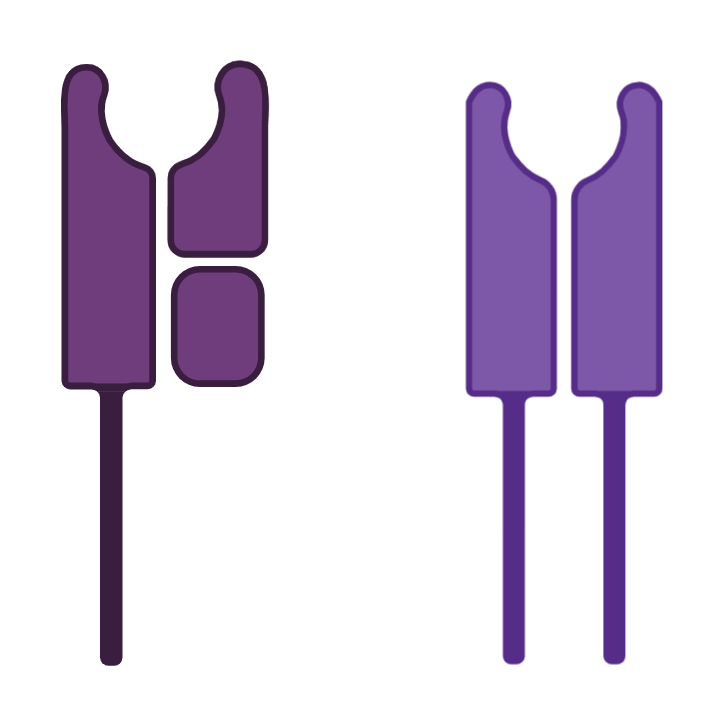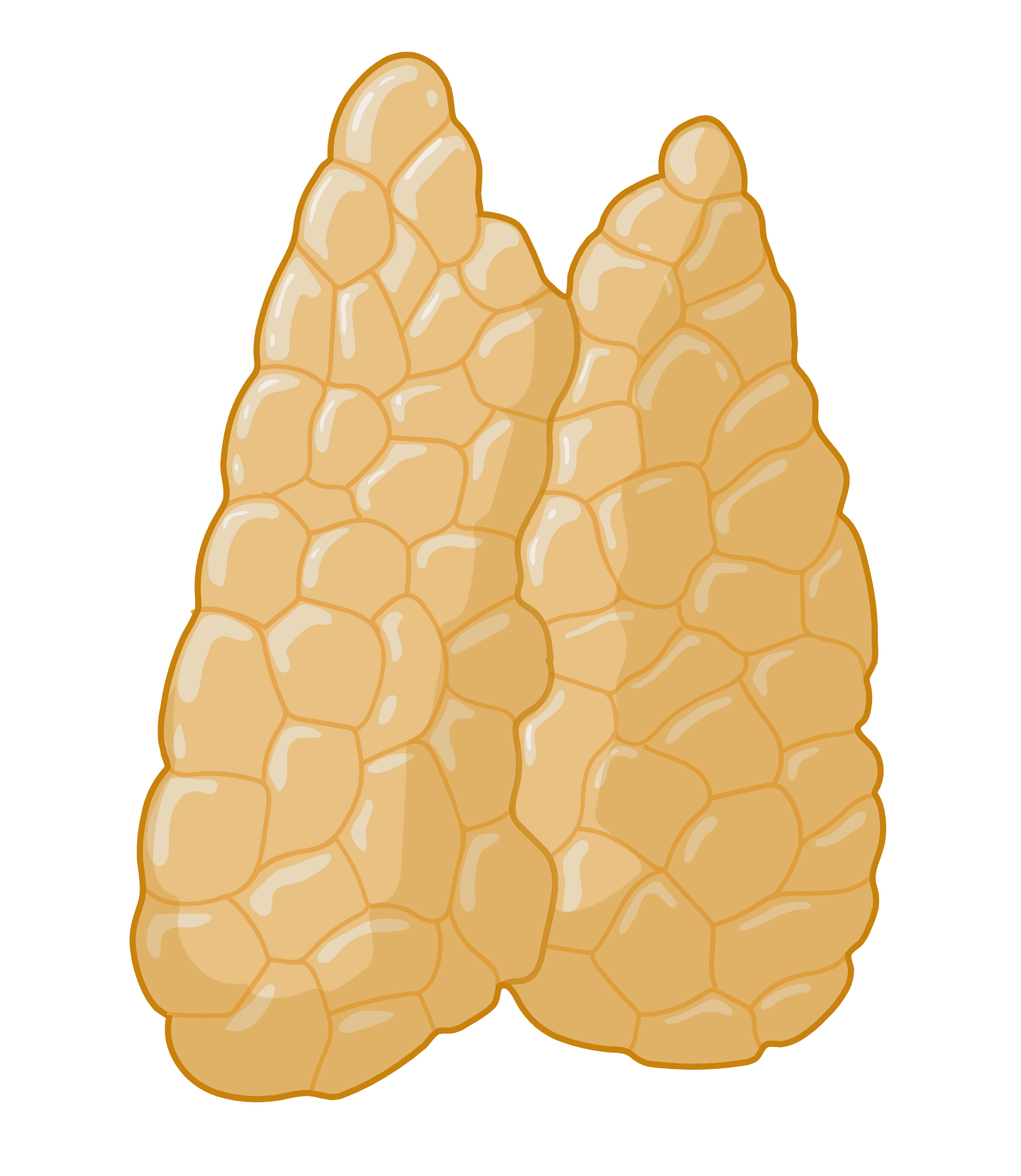
TCR
The TCR (T cell Receptor) is the specific antigen receptor for both the CD8+ T cell and the CD4+ T cell. It is the result of the somatic recombination of genes V and J of the α chain, and V D and J of the β chain.
The TCR recognises a peptide antigen presented by a Class I or Class II HLA molecule (see antigen presentation), while signal transduction is ensured by the co-receptors.
There are γδ TCRs expressed by γδ T cells, representing approximately 10% of the T cell contingent, and present mainly in the mucous membranes. The γδ TCRs are notably much less variant than the αβ TCRs. Some of them can recognize antigens embedded in Class I or Class II HLA molecules; however, most recognise:
- lipids or glycolipids embedded in non-classical HLA molecules
- either heat shock proteins from self
- or proteins of microbial origin
To simplify the matter, only the αβ TCRs will be described below.
Tertiary structure of the receptor
TCR is a short transmembrane receptor of the immunoglobulin superfamily. It is a heterodimer formed of two chains, an α chain and a β chain. Each of these chains is the product of a V(D)Jrecombination, the polymorphism of which is concentrated in the V regions (Vα and Vβ respectively) to provide maximum diversity at the paratope level, while retaining the constant structure responsible for initiating signal transduction.
Hypervariable regions of the variable region of the α and β chains of the TCR, named CDR1 and CDR2 (CDR Complementary Determining Region) recognise the alpha helices of HLA molecules, while CDR3 comes into contact with the peptide embedded in the HLA molecule, and recognises the antigen.

V(D)J TCR recombination
Each T cell synthesises a single type of TCR in very multiple copies. In other words, the T cell must only accept the rearrangement of variable region genes of a single chromosome 7 (β chain) and a single chromosome 14 (α chain), in accordance with allelic exclusion.
The rearrangement of the β chain occurs first. If it is complete, then the rearrangement of the α chain can begin. The T cell precursor can only survive if the rearrangement of the α and β chains is productive, i.e. leading to the synthesis of a complete αβ TCR.

| Chromosome | V | D | J | |
|---|---|---|---|---|
| α chain | 14 | ≈40 | 0 | ≈50 |
| β chain | 7 | ≈40 | 2 | ≈15 |
See adaptive immunity receptors for more details
Co-receptors
CD3: ensures signal transduction
Signal transduction is carried out by CD3. It is a heterohexamer made up of 3 pairs of chains:
- a ζζ (zeta-zeta) pair
- a γε (gamma-epsilon) pair
- a δε (delta-epsilon) pair
Each of these chains has long intracellular domains with ITAM motifs to transduce the signal.

CD4 or CD8: ensure the stability of the TCR/[antigen-HLA] complex
CD4 and CD8 bind the Class II and Class I HLA molecule, respectively, to conserved regions not involved in antigen presentation. These co-receptors make it possible to increase the stability of the TCR / [antigen-HLA] complex and to promote the grouping of receptors for the initiation of the downstream pathways necessary for the T cell activation.
- CD4: a single chain composed of 4 immunoglobulin domains
- CD8: heterodimer composed of 2 α or β chains OR αα homodimer.
Engagement and downstream pathways
Once the TCR engages in the [antigen-HLA] interaction, signal transduction occurs which leads to the activation of downstream molecular pathways. (see T cell activation).
What should be remembered
The TCR is the immunoreceptor carried by T cells, and each of them carries on its surface the same TCR in very numerous copies. The TCR is the product of somatic V(D)J recombination, which makes it possible to generate an infinite number of receptors to respond to the infinite number of antigens present in our environment. Since the TCR generation process is completely random, T cells undergo a positive and negative selection step to avoid the generation of self-reactive clones.



